#KashishIPR
Explore tagged Tumblr posts
Text

Here's wishing you and your family a very Happy Holi 2k21! May your life be filled with the hues of happiness, the music of celebration, and the colors of festivity.
#Happy Holi 2021#Happy Holi#Happy Holi 2K21#Holi#Holi Festival#Holi 2021#Safe Holi#Rang Barse#होलिका_दहन#Holika Dahan#kipr#ip rights#ip right protection#ip rights management#kashishipr#intellectual property law
19 notes
·
View notes
Photo

Preventing Coronavirus (COVID-19) - How to Stay Safe
Protecting ourselves and our community from getting and spreading the novel coronavirus is the need of the hour. Remember, every individual has a crucial role to play in staying healthy. As at present, there are no vaccines or medicines to treat the coronavirus, we all require taking a few protective measures for slowing the transmission of the coronavirus along with reducing illness and death and minimizing economic and social impacts. Your No-Panic Guide to Fight the Global Coronavirus Outbreak1. Wash your hands frequently with soap and water or use a sanitizer gel.2. Ensure using a tissue, handkerchief while coughing or sneezing.3. Avoid close contact with people who are sick.4. Avoid crowds as much as possible.5. Try not to touch the commonly used surfaces in public areas.6. Avoid handshaking with people.7. Clean and disinfect commonly touched surfaces around your workplace and home.8. Avoid touching your nose, eyes, or mouth with unwashed hands.9. Stay home if you are sick.
1 note
·
View note
Link
Part 3- Everything you Need to Know About Trademark and Copyright
Trademarks and copyright protect distinct creations. Typically, a copyright protects the creative works, and a trademark protects the commercial names, phrases, and logos. Watch the video to explore more. 👉 ✅ For view source: https://www.youtube.com/watch?v=di66iC7KR7k
Part 1 Video URL: https://www.youtube.com/watch?v=r1x7eB291fo Part 2 Video URL: https://www.youtube.com/watch?v=zMrNEXxXw5A
Contact - US Email Id: [email protected] Website: www.kashishipr.com
#geographical indication registration#industrial design registration#patent registration#intellectual property right protection#copyright registration#trademark registration#intellectual property law#kashishipr#ip rights
0 notes
Text
Cryptocurrency has been subjected to constant attention in the past few years for its revolutionary nature. The presence of cryptocurrency is constantly growing, and therefore, it needs the law to transform along with it to address its administration and execution. Several courts have had trouble in applying substantive Trademark Law to this field of technology. It may also be a proactive threat to trademark owners; thus, this article delves into the question of whether or not a name or logo of a cryptocurrency can function as a legitimate trademark.
Understanding Cryptocurrency
Cryptocurrency is a virtual currency that utilizes cryptography for security along with a decentralized ledger to record transactions. Unlike a physical bill or coin issued by the government, it exists only in a digital medium. It is represented in a computer code that can be programmed to embrace a variety of different rights and obligations to perform different functions other than acting primarily as a mode of payment or exchange only. It can be used to provide digital access to a good, an application, or a service, while it also represents interests in real-world assets.
Also, unlike the conventional currency, cryptocurrency is not centrally created and distributed. Instead, it is a network of computers, which maintains a digital record of transactions while performing the computational work. This, in turn, is rewarded with the newly created cryptocurrency.
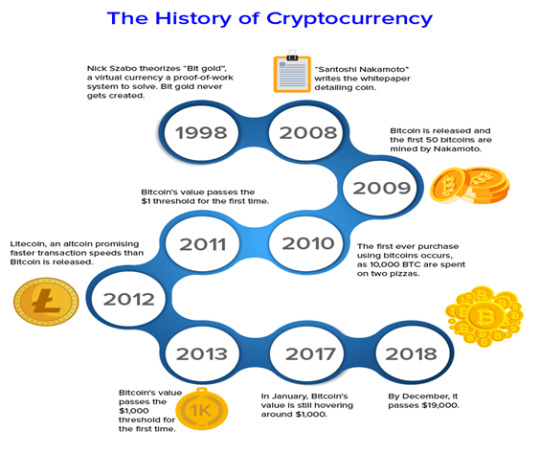
In the age of cryptocurrency, the first move was advanced by the introduction of Bitcoin, which was introduced in a white paper in 2008, and then it came to be launched in 2009. Since then, there have been more than 2500 cryptocurrencies. A few commonly known cryptocurrencies are Ethereum, Litecoin, Ripple, Zcash, Dash, and Monero – all of which have distinct trademarks.
Can Cryptocurrencies be Protected under the Trademark Law?
A trademark is a word, label, symbol, etc., which is capable of being represented graphically to distinguish the goods and services of one from that of another. While the law in the United States with utmost certainty includes ‘cryptocurrency’ in its Trademark ID Manual for bringing under its purview different classes of goods and service like within Class 9 (cryptocurrency hardware wallets, hardware for cryptocurrency mining, etc.), Class 36 ( financial exchange, such as cryptocurrency payment processing, cryptocurrency trading service, etc.), Class 42 (online cryptocurrency wallet, etc.), other jurisdictions suffer from being able to provide a concrete provision for cryptocurrency.
Therefore, for bringing cryptocurrency within the ambit of any trademark legislation, a few questions have to be answered in the affirmative:
Can cryptocurrency be considered a good or service?
Does it utilize logos, words, symbols, or any combination thereof to establish a certain degree of distinctiveness?
Does the name of the cryptocurrency act as an identifier of the source of its origin?
The question to the first answer may be subjective. Let us consider the case of Alibaba Grp. Holding Ltd. vs. Alibabacoin Foundation, where the Federal District Court held that a cryptocurrency could be considered as a good capable of bearing its own trademark. However, it is pertinent to note that where cryptocurrency is used for the like purpose of traditional currency, it may not be regarded as a good or service as it will act only as a medium of exchange for the value it holds. If the same is used for a rather specific purpose other than what currency can provide for, it may function as a good or service.
Where it is determined that a particular form of cryptocurrency is capable of being accounted as a good or service, the answer to the next two questions may be considered. Where the cryptocurrency helps identify the single source from which it emanates by associating to a particular symbol, logo, or name, it can function as a trademark. Bitcoin is an example of a decentralized cryptocurrency, which does not emanate from a single source; therefore, it may not qualify as a trademark. However, where a currency is centralized, the chances of it being considered as a trademark may increase since it is originated and distributed by a single known source.
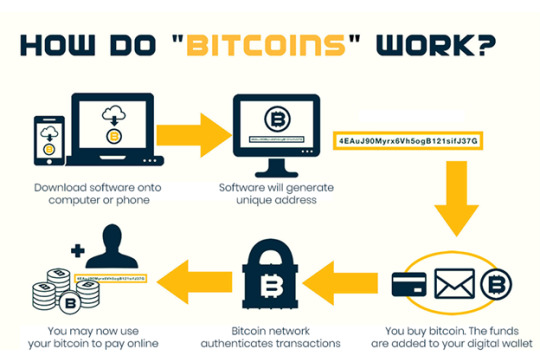
Furthermore, to be able to create a distinct image in the mind of the ordinary consuming public, it should not be generic to the category of goods or services being pursued. It is for this reason that in the case of Telegram Messenger Inc. vs. Lantah LLC, the US District Court restricted the defendants from using the term ‘gram’ for their cryptocurrency brand since it was similar to the plaintiff’s trademark of the ‘Gram’ wordmark and icon. Consider, for example, if the identity of the cryptocurrency is conceived in the minds of the consuming public in terms of only the type of cryptocurrency that can be used to buy real estate in Australia (a fictional ‘AusieCoin’), then in that case, instead of identifying the source of the company distributing the ‘AusieCoin,’ it may be at risk of being deemed the generic name of that type of digital currency. Therefore, terms like Bitcoin have been identified as a generic mark by the USPTO (US Patent and Trademark Office). However, since this is up for subjective analysis, some countries have registered ‘Bitcoin’ as a legitimate trademark, like the United Kingdom Patent Office (TM No. UK00003279106) and the Spanish Patent and Trademark Office (Trademark Number: M4046141).
Cryptocurrency has taken diverse forms due to its tendency to evolve. Ever since bitcoins were introduced, newer versions have been witnessed like that in the form of ‘alt-coins,’ which are alternatives of varying degrees and can take up various other forms. The realm of cryptocurrency gets far more complicated with new generation blockchains like Neo and Ethereum. Since cryptocurrency is diverse and it is difficult to exercise control over it, no individual or entity can claim ownership or responsibility; hence, there appears to be a meager possibility to protect any Intellectual Property Rights (IPRs) in community-based blockchains.
A few Examples of Registered CryptocurrencyTrademark for CryptocurrencyClassificationGoods/ServicesOmnicoinClass 36Cryptocurrency, namely, providing a virtual currency for use by members of an online community via a global computer network; cryptocurrency, namely, a peer-to-peer digital currency, incorporating cryptographic protocols, operating through the internet, and used as a method of payment for goods and services.ConcoinClass 36Cryptocurrency, namely, a peer-to-peer digital currency, incorporating cryptographic protocols, operating through the internet, and used as a method of payment for goods and services.QuiqClass 36Cryptocurrency, namely, providing a virtual currency for use by members of an online community via a global computer network; cryptocurrency, namely, a peer-to-peer digital currency, incorporating cryptographic protocols, operating through the internet, and used as a method of payment for goods and services.
Disadvantage of not Attributing Trademark Protection to Cryptocurrency
The ramifications of not attributing trademark ownership could lead to multiple issues arising from the unsound use of such technology. Consider an example of an ordinary consumer surfing the internet who is intrigued about cryptocurrency and wishes to buy the same. After considering the option of buying the bitcoins, he finally decides to buy them from a person who is extensively promoting the sale of such currency while acting as a fraudulent investor. Since the said cryptocurrency is not owned and protected under the trademark law, the proprietor cannot withhold anyone acting in such fraudulent capacity to undo the harm to the reputation of the brand of cryptocurrency.
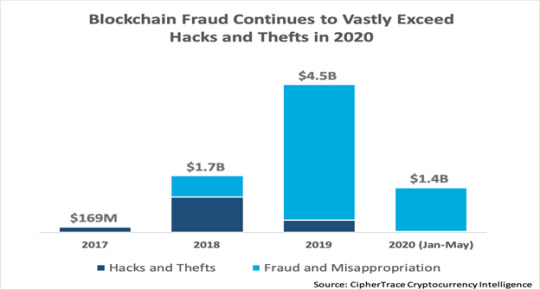
In failing to prevent the said action, the consumer may have to face difficulties that were uncalled for due to a lack of remedies that could have been resorted to. In addition to the same, terms like ‘Bitcoin’ and ‘Blockchain’ have gained much popularity, and it is easy to use such terms for other goods or services without being legally restrained. Therefore, it is imperative to determine the method of granting protection to cryptocurrencies to safeguard users from being deceived by different cryptocurrency providers and withhold the reputation of authorized providers.
Therefore, another alternative to sole proprietorship over such technologies can be found in the attribution of collective authorship to proprietors in the form of ‘collective marks.’ The same would act as a safety net against consumers being misled and also overcome the paradox of de-centralized control. However, this is also not a problem-free route as determining true ownership may be difficult to trace the origin of the proprietor of trademarks.
Concluding Remarks

Many giants are willing to enter the race for cryptocurrencies like Facebook, Samsung, and Nike to provide for their cryptocurrency avenues. Therefore, as observed, the advancement of technology in the field of cryptocurrency has brought in new challenges and issues, which need to be addressed through the introduction of regulatory and legal changes.
First and foremost, it is imperative to allocate a place within the Nice Classification to cryptocurrencies and the many kinds a cryptocurrency can develop into probably. Therefore, the recognition has to come in the form of legislation to develop a new jurisprudence. Furthermore, cryptocurrencies should seek Trademark Protection in countries that offer such provision to strengthen their claim over the use of a particular mark or work or logo until a proper framework in the desired member state is established.
Lastly, seeking reformation of trademark laws may seem ambitious in countries where the cryptocurrency has been banned altogether (for instance, India) due to its adverse effects on morality and in favor of the public policy. Such countries will not afford protection from misrepresentation and deception through the actions of third parties. Therefore, such technology would have to survive the test of time for us to analyze the appropriate route that should be resorted to for addressing the adversaries arising out of the use of cryptocurrency. ✅ For more visit: https://www.kashishipr.com/
#trademark law#trademark protection#intellectual property rights (IPRs)#intellectual property (IP)#intellectual property protection#copyright law#copyright protection#cautionary notices#kipr#ip rights#ip right protection#ip rights management#kashishipr#intellectual property law#ip attorney#trademark#trademark registration#trademark registration online#register trademark
2 notes
·
View notes
Photo

Who can Register a Trademark in Bangladesh?
👉 ✅ For view source: https://bit.ly/3jptfuw
• The primary law governing trademark registration and protection in Bangladesh is the Trademarks Act of 2009.
• In Bangladesh, any individual or body corporate claiming to be the proprietor of a trademark may apply with the Department of Patents, Designs, and Trademarks (DPDT) for the registration of the mark.
• Once a trademark gets registered, it lasts for 07 years from the date of application, which can be further renewed indefinitely for successive periods of 10 years each upon payment of the required renewal fee.
For more info, you may write to us at [email protected].
#kipr#ip rights#ip right protection#bangladesh#ip rights management#kashishipr#intellectual property law#ip attorney#trademark rights in bangladesh#trademark#trademark registration#trademark registration online#trademark registration in bangladesh#register trademark in bangladesh#register trademark bangladesh#register trademark
0 notes
Photo

Copyright Protection in Nepal
👉 ✅ For more visit: https://bit.ly/380HH8q
#copyright infringement#copyright registration#copyright protection in nepal#copyright protection#kipr#ip rights#ip right protection#nepal#ip rights management#kashishipr#intellectual property law#ip attorney#trademark rights in nepal#trademark#trademark registration#trademark registration online#trademark registration in nepal#register trademark in nepal#register trademark nepal#register trademark
2 notes
·
View notes
Link
Technology and science are ever-evolving in times of digitization and globalization. For keeping in pace with the demands of the consumers as well as stakeholders of a business, the law comes in handy. This article will project some light on the intermingling role of Intellectual Property (IP) in the domain of brand protection in the form of not just trademarks but also other forms like patents, copyright, trade secret, and so on, which may help you to choose and device the strategy best suited for you.
What is Brand Protection, and from what is Such Protection Sought?
Brand protection is the strategic means to safeguard the IP and non-IP assets of an entity and its associated brands against real and potential infringers. The brand protection strategy plays a prime role in harnessing the economic value of a brand along with its name, image, reputation, and overall value.
The protection is majorly sought against all kinds of brand abuse against which the entity should remain vigilant at all times. These may include but are not limited to:

1. Brand Counterfeiting: It refers to the imitations or duplicates of a branded product utilizing fake trademarks without authorization to deceive consumers. By the year 2022, the global counterfeiting industry is predicted to be worth $4.2 trillion.
2. Malicious Websites: Malicious websites are created by infringers to damage the brand and may take the following different forms:-
· Cyber-squatters
· Typo-squatters
· Imitation websites
3. Piracy of Copyright: Copyrighted articles like art, literature, computer programs are often sold at cheaper rates by illegitimately utilizing proprietors' rights for unauthorized profits and gains. The same holds for books and DVDs.
4. Trademark Squatting: Squatters register names that are a sound-alike or look-alike of authentic marks with bad faith attached. For example, the Jordan case where the squatter used the Qiaodan mark.
5. Online Impersonation: It happens when the infringer poses himself to be the actual proprietor of the brand by using its trademarked logos and copyrighted assets.
Role of IP in Protecting a Brand
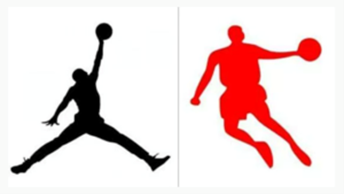
IP plays a crucial role in devising the brand protection strategy. Different IP routes can be taken in furtherance of the achievement of this goal. They are:-
1) Trademarks: To put it straight, trademarks and brands are not the same and hence, cannot be used interchangeably. Where a trademark will help differentiate between the goods of two proprietors and identify the source of origin, brands have more complex features. The image building, status, value of the personality of the brand, and consumer association are all the intrinsic features that constitute a brand. A brand not only helps in consumer association but also develops the corporate existence of an entire company to fulfill a wide range of goals. However, both trademarks and brands help in identification; they play different yet overlapping roles.
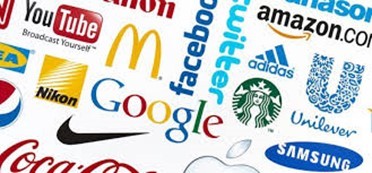
A trademark is a device, brand, heading, label, ticket, name, signature, word, letter, numeral, shape of goods, packaging or combination of colors or any combination thereof, which helps differentiate between the goods and services of one from that of another. The use of a trademark helps secure the exclusive right to use the brand name or device and prevent misuse by imitators. It also helps build brand loyalty amongst existent and potential consumers, which adds-on to the feature of the 'quality' of the mark.
Therefore, a trademark helps a brand to shift from a product-level brand to a corporate-level brand by attaining a certain amount of goodwill, which also depicts the interplay of trademarks and brands. The same is the most commonly adopted strategy due to its ease of operation and registration. A few examples include Nike's Swoosh, Chanel's representation of 'C,' Twitter's bluebird, and Adidas' three stripes logo.
2) Trade Dress - A brand can also be identified by the use of a distinct trade dress. The way a trademark helps identify the source of a product, a trade-dress serves an identical purpose. Trade dress often takes the form of labels and designs of packages like the Coca-Cola bottle (Tm. Reg. No. 1,057,884). The dress is composed of the look and feel of the product with distinct yet consistent specificity. A functional feature or a design aiding the function of a product cannot be protected. Other brands that have considered trade dress protection include Converse for its 'hi-top' shoes, Hershey's for its 'Hershey Kiss' chocolates, Burberry for its check pattern, Christian Louboutin for its red sole, and the list goes on.

The threshold for seeking protection is often higher than trademarks, and therefore, requires a 'secondary meaning' to be proven, which means that the public identifies the design or the trade dress and relates it to a specific source. Hence, where a trademark may ensure immediate protection, seeking protection of a trade dress may relatively take lolonger. The Federal Court of the United States recently established the six-factor test in the Converse Inc. vs. ITC case where Converse alleged that the midsole design of its Chuck Taylor shoes had gathered sufficient goodwill and reputation. These factors are:
· Association of the trade dress with a particular source by actual purchasers (typically measured by consumer surveys);
· Length, degree, and exclusivity of use;
· Amount and manner of advertising;
· Amount of sales and number of customers;
· Intentional copying; and
· Unsolicited media coverage of the product embodying the mark
Once the secondary meaning is established, the trade dress can prevent illegitimate copying and infringement and can be a great branding strategy to build the reputation of a brand.
3) Design Patent: A design patent is granted for the ornamental features of a product, which are non-functional. It is for this reason why the court decided to invalidate two of Ford's design patents covering the automotive-body parts for its F-150 truck (Auto. Body Parts Ass'n vs. Ford Global Techs., LLC, 293 F. Supp. 3d 690 (E. D. Mi. 2018)). The pre-requisite is that such a design should be new and non-obvious to the existing craft. It plays a crucial role in branding since the design forms the element that gathers the attention of the eye before actually using it. It helps appeal and lure consumers towards buying some specific product, and over time, it reduces the search-cost when the consumers adopt the product and absorb the brand image that comes with it.

Design patents form a determinant role in the field of automotive and cellular devices to safeguard their branding and image. It is for this reason why Apple succeeded in a lawsuit against Samsung for Samsung infringed upon three of its design-patents covering its smart-phone technology inclusive of its appearance, as well as, the arrangement of the icons on its home screen. The protection afforded by design patents is a better alternative to trade dress protection since it does not mandate proof of established 'secondary-meaning.'
4) Copyright: Seeking Copyright Protection is a good strategy in furtherance of brand protection where the product involves original works of authorship, such as visual art, music, and literary works. It goes beyond the simple creation of works and can help in brand promotion and protection by safeguarding distinctive and original logos/emblems, labels, product-use manuals, and even advertisements. For example, in Maple and Co. vs. Junior Army and Navy Stores, an illustrated catalog for advertisement, which was not for sale, was held to be a subject matter of copyright.
However, not all types of artistic expressions are worthy of being protected under the law. In a case where the artistic elements of uniforms of cheerleaders were brought forth, the court held that the feature could be copyrighted if:
(i) It can be perceived as a work of art separate from the useful article; and
(ii) It would qualify as a pictorial, graphic, or sculptural work eligible for protection if imagined separately from the useful article.
Therefore, before resorting to such protection, the strategists should keep in mind the points (mentioned above) of consideration to prevent contrasting objections to their claims. Copyright can be beneficial in the creation of a brand image in the long run since once the protection is sought, the brand's entity has the exclusive right to reproduce, copy, display, perform or create derivative works from their copyrighted work.
5) Trade secret: Brand protectionists can undertake to choose an alternative to mandatory disclosure, which is required for all other kinds of IP except trade secrets. The same is more prevalent in the food & beverage industry.
Let's take some widely known examples where brands have endorsed protection under trade secrets. The most common is the Coca-Cola secret recipe. Other examples are Listerine's formula of Lambert Pharmaceuticals, the recipe of the Twinkies, McDonald Big Mac special secret sauce, Google's search algorithm, KFC's original recipe hidden in a safe. These choices also influence the marketing strategy of the brand.
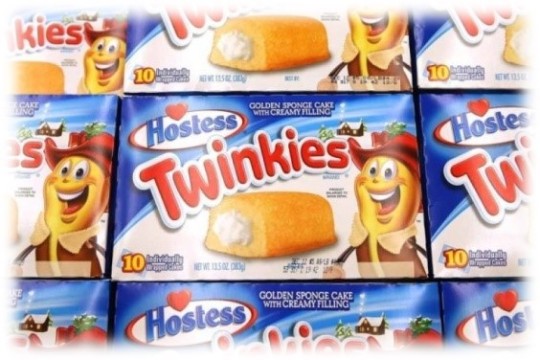
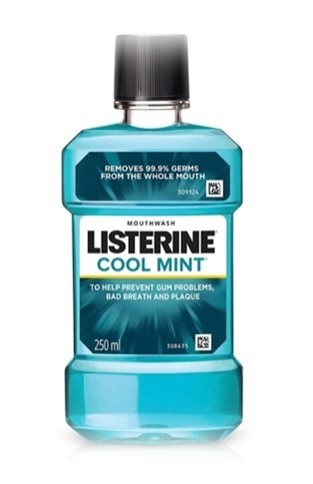
6) Overlapping IP: The best kind of protection that an entity can choose to protect and confine its brand against unlawful use is by deploying IP in layers. Let us take a hypothetical example of a food chain for better clarification. What kind of branding strategy aligned with IP be the most suitable in this scenario?
The food chain can trademark its logo (device) and trade name (word).
It can also claim Trademark Protection of its mascot, if any - for instance, Pillsbury's Doughboy, Ronald McDonald, The Geico Gecko, and the Starbucks Mermaid. These can help in further merchandising options in the form of toys, stationery, apparel, etc.
The employees' uniform can be design protected.
The recipe can either be copyright or a trade secret, depending on the purpose of taking either route.
The cutlery and utensils for presentation can be design protected.
The layout of the food-chain/restaurant, after having attained and established a certain degree of reputation through securing a 'secondary meaning,' can be protected in the form of a trademark.
If there's any jingle used for advertisement, the tune can be copyrighted. If distinctive, the tagline or jingle can be trademarked.
Other Modes of Protecting your Brand and Conclusive Remarks
From the above discussion, it can be adduced that there are many tools a brand strategist has at his disposal to protect the brand. Also, it is advised to use IP in the best possible way by layering its different forms for amplified results. In each instance, the strategists should carefully consider the tools that best suit the dissemination and protection of the product/service at issue.
To protect your brand, you should consider the following steps:

1.Always register your IP assets to prevent unauthorized use and counterfeits.
2.Signing Non-Disclosure Agreements is a good option to prevent the draining of IP assets or their spillover. Such agreements help safeguard confidential information.
3.Malicious websites should be kept under check by exercising continuous surveillance in terms of both online and offline operations.
4.The establishment of a strong media presence helps in creating a brand image and attracting potential consumers while withholding the attention of existing consumers.
5. Always be vocal in educating consumers of unwary trade practices, which might adversely affect consumer interest. They help differentiate between legitimate and fake products and services. For view source: https://bit.ly/39kP8Xp
Don’t forget to follow us on social media:
Facebook – https://www.facebook.com/kashishipr/
Twitter – https://twitter.com/kashishipr
Linkedin – https://www.linkedin.com/company/kashishipr/
Pinterest – https://www.pinterest.com/kashishipr/
Tumblr – https://kashishipr.tumblr.com/
Contact - US
Email Id: [email protected]
Website: www.kashishipr.com
#trademark registration online#intellectual property#brand protection strategy#intellectual property_ip#copyright protection#copyright#trademark protection#kipr#ip rights#ip right protection#ip rights management#kashishipr#intellectual property law#ip attorney#trademark trademark registration#register trademark#patent law#industrial design
1 note
·
View note
Photo

It's time to recognize and pay tribute to the selfless health heroes and workers who are making sincere efforts to protect our lives in the COVID-19 crisis.
#World Health Day#Covid 19#Health Day 2020#World Health Day 2020#COVID 19 Outbreak#Stay Home Stay Safe#Fear Distancing#Social Distancing#IP Right#Kashishipr
2 notes
·
View notes
Photo

May you all be blessed with Allah's grace, love, patience, peace, and joy today and always. Eid Mubarak!
#Eid#Eid 2020#Eid Mubarak#Eid Mubarak 2020#Eid At Home#Eid Al Fitr#Happy Eid#Happy Eid Mubarak#Happy Eid Mubarak 2020#Kashishipr#IP Rights#Intellectual Property Law#Trademark Registration
1 note
·
View note
Photo

🎆Happy Chinese New Year. Wishing you a year of good fortune, unparalleled success, and perfect health.🎆
#ChineseNewYear2020 #China #ChineseNewYear #Kashishipr #HappyChineseNewYear2020
1 note
·
View note
Link
Are you facing issues in protecting, managing, or monetizing your Intellectual Property (IP)? Don’t worry, as you can now implement blockchain technology, which works as an advanced tool to help you protect, manage, and monetize your IP.
Intellectual property, which refers to outcomes of the human mind, includes many different things. From inventions to artistic works and unique products, almost every uncommon and useful thing can rest under its umbrella. Whether you create a symbol, write a book, design a game, or come up with any other intangible media, you (as an author) can access and enjoy Intellectual Property Rights (IPRs) over the same. Nevertheless, the present system appears a bit weak to bring this phenomenon in practice. You are possibly aware of how easy it is for others to steal your content nowadays when the internet facilitates your data to flow freely across the globe.
Blockchain technology provides an incorruptible digital ledger that aids you in tracking assets and recording transactions in a business network. Assets can be tangible such as cash, cars, and houses or intangible like IP. Working as a tool to store and manage assets on a decentralized ledger and track transactions associated with digital content, including anything – music to pieces of art, etc., blockchain ensures reliability, accountability, and transparency. In this way, it allows an immediate revenue stream for creators by enabling a direct relationship between them and consumers.
IP Protection with Blockchain
As a creator of content, image, or anything else, you can understand how frustrating it is to put in efforts and time on something that people can access freely without your consent and any compensation. Moreover, you also comprehend the importance of retaining ownership rights as it is the easiest method to avoid such frustrating acts. Nevertheless, with the current model of the IP industry where getting your asset registered is a time taking process and the internet that has made copying content quite easy, doing so appears a bit hard. Worst, proving infringement of your content in court without proof of ownership becomes difficult. Here, blockchain digital ledgers that emphasize working with time-stamped and unalterable records come up as the perfect place to store evidence of your ownership rights. They provide a solution for authenticating and proving the time of creation and the identity of the original creator, thus eliminating all sorts of doubts and making it easier for creators to enforce their rights when��Copyright Infringement of their content occurs.
IP Management with Blockchain
In the present era, once creators upload their work online, it becomes arduous for them to maintain control of the same. Moreover, not only the creators find it problematic to know who is using or making profits from their content, but even third-parties who wish to seek a license to use someone’s IP face difficulty in determining the relevant owner. All these facts result in increasing infringement issues and preventing authors from properly monetizing their works. The blockchain technology, which maintains a fair digital record enough to prove the creator’s authenticity, can prevent the occurrence of such issues. Besides, by maintaining transparency, it helps third parties to identify the original owner and get his/her permission to use the content. And this, ultimately, benefits the creators with the option to obtain expected compensation in exchange for licensing their IP.
IP Monetization with Blockchain
Blockchain technology-based smart contracts play an active role in helping creators monetize their IP. These contracts empower creators to not only dictate the fee and terms of their licensing agreements and ensure that the licensee is using it as expected but also license content directly to end-users. They can also serve you with benefits like automatic payment triggering whenever people access your content, appropriate scaling of compensations, etc. Blockchain, in this manner, aids you to save your money and monetize IP effectively as with smart contracts, you needn’t have middlemen.
Conclusion
Almost every one of us knows that blockchain technology, if used correctly, can help creators in improving efficiency, cutting expenses, and increasing revenue by creating new products. Still, many individuals and enterprises often ignore stepping ahead with it. Well, whether to use blockchain for protection, management, and monetization of your IP or not is your choice. Nonetheless, if you want to experience noteworthy protection of your IP and suitable compensation for your creative works, it is advisable to go for this advanced technology. ✅ For view-source: https://bit.ly/32nrwvG
Don’t forget to follow us on social media:
Facebook – https://www.facebook.com/kashishipr/
Twitter – https://twitter.com/kashishipr
Linkedin – https://www.linkedin.com/company/kashishipr/
Pinterest – https://www.pinterest.com/kashishipr/
Tumblr – https://kashishipr.tumblr.com/
#intellectual property rights#intellectual property#Intellectual Property Law#intellectual property right#intellectual property protection#IP Rights#Kipg#Kashishipr
2 notes
·
View notes
Link
Pricefx, the market leader in cloud pricing software, recently announced that it has entered into a comprehensive settlement agreement with Vendavo, the global leader in commercial excellence solutions to resolve all worldwide lawsuits, including claims of Intellectual Property (IP) infringement that each firm made against the other.
Marcin Cichon, CEO and co-founder of Pricefx, said that they are pleased to resolve the conflicts and direct all of their attention to serving their customers and pursuing to deliver the best SaaS-based pricing software in the market. They are sure that not just the business partners but also the customers of both Pricefx and Vendavo will be happy to hear that the disputes have come to an end and now, both companies can emphasize their strengths and fair competition in the marketplace.
The litigation between the two firms began when Vendavo filed a complaint in December 2017 in California federal court. After that, the lawsuit expanded and included diverse counterclaims by Pricefx against Vendavo for trade secret misappropriation as well as an ancillary suit in Illinois federal court, and challenges to Vendavo’s patents in the U.S. Patent Office.
Aaron Werner, General Counsel of Pricefx, stated that the settlement recognizes Pricefx as the undisputed owner of all of its intellectual property and software, and Pricefx’s products or services do not violate any of Vendavo’s Intellectual Property Rights (IPRs).
Pricefx will sustain its commitment to extending its world-leading cloud-based pricing platform that serves customers with both flexibility and comprehensive functionality.
Axel Krieger, Board Member of Pricefx and Managing Director/Founding Partner of Digital + Partners, announced that they are pleased Pricefx has permanently put the disputes behind and is making efforts for continuing to be the leading innovator in pricing software.
Ron Kermisch, Board Member of Pricefx and Bain & Company’s Global Pricing Leader, joined Alex Krieger by saying that they believe Pricefx’s best days are ahead and they look forward to partnering with its agile and flexible platform.
The recent settlement brings in the opportunities of numerous recent awards for Pricefx, from being the first C/4 HANA Independent Solution Vendor (ISV) to reaching a Gold-level status for SAP® PartnerEdge® Build. Indeed, Pricefx recently won the prestigious 2019 SAMMY award from the Business Intelligence Group for being the only pricing software vendor driving major positive reforms in sales and marketing organizations worldwide.
Bruno Slosse, President and Chief Executive Officer of Vendavo, said that as the market leader in pricing and sales intelligence solutions, it is crucial to ensure a fair competitive playing field.
Vendavo also believes that the settlement of lawsuits at this time is in the best interests of all. According to the Vendavo, the result of settling this dispute will be beneficial for their customers, employees, and shareholders, and it further underlines the strength and validity of their intellectual property portfolio. For view source: https://www.kashishipr.com/blog/pricefx-announces-resolution-of-intellectual-property-lawsuit/
Don’t forget to follow us on social media:
Facebook – https://www.facebook.com/kashishipr/
Twitter – https://twitter.com/kashishipr
Linkedin – https://www.linkedin.com/company/kashishipr/
Pinterest – https://www.pinterest.com/kashishipr/
Tumblr – https://kashishipr.tumblr.com/
#trademark registration process#Pricefx#Announces#Resolution#Intellectual Property#Intellectual Property Blog#Intellectual Property Law#Intellectual Property Law Firm#Intellectual Property Right#IPRight#Kashishipr
2 notes
·
View notes
Link
As the slogan “OK Boomer” has gained remarkable attention in the mainstream beyond Generation Z, someone has applied for the Trademark Registration of “OK Boomer” with the United States Patent and Trademark Office (USPTO).
TikTok, the incredibly popular video-sharing app, has emerged as a launchpad for various viral memes and internet trends, including “OK Boomer” to diss the older generation. Someone is attempting to capitalize on this latest internet meme spawned from Generation Z by filing a Trademark Application to get it registered with the USPTO.
Teens have been using the phrase “OK Boomer” to push fun at old generations for being and remaining out-of-touch and controlled it as a rallying cry over the internet, especially TikTok. The slogan has obtained attention in the mainstream – thanks to articles – in news outlets, encompassing profile from the New York Times’ Taylor Lorenz.
Hence, the fact that people are finding ways to extract profit from the popularity of the slogan or phrase beyond framing social media content or receiving laughs out of their friends should not come as a surprise.
The application filed on 31st October 2019 with the US Patent and Trademark Office (USPTO) shows that someone is trying to turn “OK Boomer” into a Registered Trademark. The $275 application, which aims to trademark “sweaters, shirts, accessories, and shorts,” appeared sporting the two-word slogan.
The person behind the recent trademark application isn’t the only individual or first one with the idea of getting merchandise “OK Boomer” registered. A 19-year-old girl, Shannon O’Connor, recently announced that she has been marketing hoodies and shirts with “OK Boomer” in style similar to the font on the plastic shopping bags, which read “thank you.” She further continued by saying that since promoting her Bonfire merchandise on TikTok, the girl had made around $25,000 in sales. Indeed, not just Shannon but many other sellers have also been using the phrase “OK Boomer” to sell buttons and stickers for iPhone cases and coffee mugs.
Indeed, the latest filing with the USPTO is just a trademark application, and in general, the process of obtaining Trademark Protection for anything by officially registering it takes more than a year. Besides, considering that “OK Boomer” has already seemed on merchandise and in the current culture, it is a bit unclear how successful the trademark application would prove.
A case that could provide an idea regarding the “OK Boomer” trademark potential is Lebron James’ recent endeavor to trademark the two-word phrase – “Taco Tuesday.” The USPTO rejected the basketball star’s trademark application stating that the phrase is a “commonplace term, expression, or message” used widely by several sources that convey a familiar and well-recognized sentiment or concept. ✅ For view-source: https://bit.ly/2s505dr
Don’t forget to follow us on social media:
Facebook – https://www.facebook.com/kashishipr/
Twitter – https://twitter.com/kashishipr
Linkedin – https://www.linkedin.com/company/kashishipr/
Pinterest – https://www.pinterest.com/kashishipr/
Tumblr – https://kashishipr.tumblr.com/
Contact - US
Email Id: [email protected]
Website: www.kashishipr.com
#trademark registration in afghanistan#Online Trademark Registration in Afghanistan#Online Trademark Registration in Bangladesh#Online Trademark Registration in Bhutan#Online Trademark Registration in India#Online Trademark Registration in Maldives#Online Trademark Registration in Nepal#Online Trademark Registration in Pakistan#Online Trademark Registration in Sri Lanka#Registered Trademark#trademark applications#trademark protection#Trademark Protection in Afghanistan#trademark registration#Kashishipr
1 note
·
View note
Link
Kashishipr | Catering All-inclusive Solution to IP Related Services Like - Trademark, Copyright Registration, and Portfolio Management by Specialized Attorneys. ✅ For more visit:https://bit.ly/2Oml96L
#Trademark Registration Process#Copyright Registration#Intellectual Property Rights#Patent Attorney#Intellectual Property#Patent Application#Trademark Registration Online#register a trademark#Industrial Design#Intellectual Property Right in India#Patent Protection in India#Trademark Application in India#Industrial Design in India#patent application in india#Online Trademark Registration in India#Trademark Registration in India#IP Right in India#Kashishipr
1 note
·
View note
Link
South Korean Electronics Maker LG Electronics Inc., on 5th November 2019, has announced that it filed a Patent Infringement lawsuit against Hisense, alleging that the Chinese TV manufacturer has violated its TV-related patents.
LG announced that it filed complaints against Chinese and American branches of Hisense in the central district court of California for allegedly infringing upon its four patents. The first patent is associated with LED light assembly technology deployed to transfer LED backlights to LED panels in a stable way. The second one revolves around the user interface (UI) technology that aids users to recognize third party devices like DVD players or computers when they are linked to or connected with the TVs. However, the third patent focuses on technology that turns images and pictures on TV screens sharper. The final or last or fourth patent that rests as a part of this lawsuit emphasizes technology that increases Wi-Fi data transfer rates on televisions.
LG claimed that most of the TV sets sold by Hisense in the US (United States) violate these patents. LG added that it sent several requests and warnings for talks with Hisense earlier this year, but the Chinese rival had acted insincerely, thus forcing the company to go for the other option, i.e., the lawsuit.
The South Korean company has made a statement that they will aggressively protect their patents.
Following Samsung, LG Electronics is the second-largest TV manufacturer worldwide, but its earnings were shortened by its compatriot arch-rival and Chinese upstarts at the beginning of this year. At the time of the second quarter, LG Electronics’s total shipments decline by around 700,000 as compared to the previous quarter, and this appeared as alarm bells for the company as the second quarter is the phase when TV manufacturers can show their strongest performance by launching new products at highest possible prices. LG saw that its gains turned half in the second quarter in comparison to the same period a year ago.
Meanwhile, Hisense has grown to become the fourth-largest firm worldwide in shipment totals and the fifth largest in terms of sales figures. According to IHS Markit, a London-based global information provider formed in 2016, Samsung held 31.5% of the total market share calculated globally in TV sales during the second quarter. LG and Sony followed Samsung with 16.5% and 8.8%. Nevertheless, Chinese companies Hisense and TCL with 6.2% and 6.3% of overall market shares respectively were not far behind.
LG recorded that its third-quarter profits have been gone down in comparison to last year’s gains. And therefore, during the announcement of the third-quarter results said that it was optimistic and promised to proffer a “stable profit structure” for its OLED TV line-up, which would be equivalent to a premium consumer device that will ensure its growth. As part of the patent lawsuit, LG is demanding an undefined amount of damages from the Chinese rival, which with a strong presence on its home turf, has expanded its share in the United States and Europe. ✅ For view source: https://bit.ly/2WVsIFv
Don’t forget to follow us on social media:
Facebook – https://www.facebook.com/kashishipr/
Twitter – https://twitter.com/kashishipr
Linkedin – https://www.linkedin.com/company/kashishipr/
Pinterest – https://www.pinterest.com/kashishipr/
Tumblr – https://kashishipr.tumblr.com/
Contact - US
Email Id: [email protected]
Website: www.kashishipr.com
#patent infringement#Intellectual Property#Intellectual Property Law#Intellectual Property Law Firm#Intellectual Property Protection#Intellectual Property Right#IP Attorney#IP Right#Kashishipr#Kipg
1 note
·
View note
Link
Geographical indication, popularly known as GI, may not be a new term for you. But, what about the Designation of Origin? Are you aware of this phrase? Besides, are you familiar with Geographical Indication in a complete sense? If yes, then we are proud to appreciate you as having information regarding such crucial things is a need of the present century and can benefit you in several ways. However, on the other side, if you aren’t aware of what is GI or Designation of Origin, then don’t worry as after going through this article, you will be. So, let’s start:
What is a Geographical Indication?
A geographical indication refers to a name, symbol, or sign used on products that correspond to a specific geographical origin and possess reputation, characteristics, and qualities that are due to that origin. Note that to work as a GI, the name or sign must identify a product as originating in a given place. Apart from functioning as a quality mark to improve producers’ revenue and export markets, GI indicates the correct originating source of the product. It prohibits unauthorized individuals or companies from manufacturing or selling counterfeit products that don’t meet the applicable standards set according to that region under the name holding GI tag. For instance, producers of Darjeeling tea carrying GI tag have the legal power, i.e., right to prevent the use of word Darjeeling on the tea commodities, which are either not produced in their jurisdictions or failed to meet the standards set by the GI law. With the GI tag, one can prevent unauthorized production or selling of fake products under authorized identity, but not the use of the same technique or procedure used to produce products similar to those are holding GI tag.
What is the Designation of Origin?
Protected Designation of Origin refers to the name of a specific area or geographical region recognized by official rules to create products with characteristics associated with that location. We can also define it as a type of legal protection that implies inherent or exclusive natural and human factors of the geographic conditions resulting in specific quality and characteristics of the products or services. The designation of origin protects names or signs, which indicates that a product originates from a particular geographical region.
Why Is Protection of Geographical Indication or Designation of Origin Essential?
Geographical indications are recognized by consumers to denote the quality and origin of products that have acquired valuable reputations, which, if not adequately protected, can be misrepresented by fraudulent commercial operators. That’s why the protection of both GIs and designation of origin is essential. Effective protection of these two legal systems is likewise beneficial to consumers and the general public. How? By promoting fair market competition and business practices, protected GI and designation of origin will assist the consumers in buying quality products. Moreover, by preserving the active workforce and stimulating family farms, especially in rural areas to develop traditional and specific products and services, the protection of these signs is helpful in the economic growth of the nation.
How Can the Protection of Geographical Indications be obtained?
The protection of GIs under Intellectual Property (IP) can be obtained easily through registration. These are usually protected under country-specific IP Law and by following the concepts such as consumer protection laws, laws for the protection of certification marks, special laws for the protection of geographical indications or designations of origin, or laws against unfair competition. Once obtained by accomplishing the registration procedure appropriately, the Geographical Indication Protection facilitates the original producer with the right to prevent others from using the authorized indication for products that don’t conform to the applicable standards. The registered GI and designation of origin can be used by all producers who meet the requirements and are from the specific locality. Geographical indication and designation of origin are often used with the name, logo, or sign that can be protected under an exclusive Intellectual Property Right (IPR), i.e., a trademark with the perspective to emphasize the individual character and general characteristics of products’ origin.
At last, we can conclude that GI and designation of origin are the best sources to avoid infringement concerns and build a remarkable reputation that makes the consumers worldwide to buy the specific product. Besides increasing the sale of the registered product, these two legal systems enhance tourism in areas where these products are being made by exciting people to visit there. In this way, these ultimately prove beneficial to not just producers but the entire nation. ✅ For view-source: https://bit.ly/2WZ3PZC
Don’t forget to follow us on social media:
Facebook – https://www.facebook.com/kashishipr/
Twitter – https://twitter.com/kashishipr
Linkedin – https://www.linkedin.com/company/kashishipr/
Pinterest – https://www.pinterest.com/kashishipr/
Tumblr – https://kashishipr.tumblr.com/
Contact - US
Email Id: [email protected]
Website: www.kashishipr.com
#kipg#Geographical Indication Protection#Industrial Design#Intellectual Property Law#Intellectual Property Law Firm#Intellectual Property Protection#Intellectual Property Right (IPR)#IP Attorney#IP Right#Kashishipr
1 note
·
View note